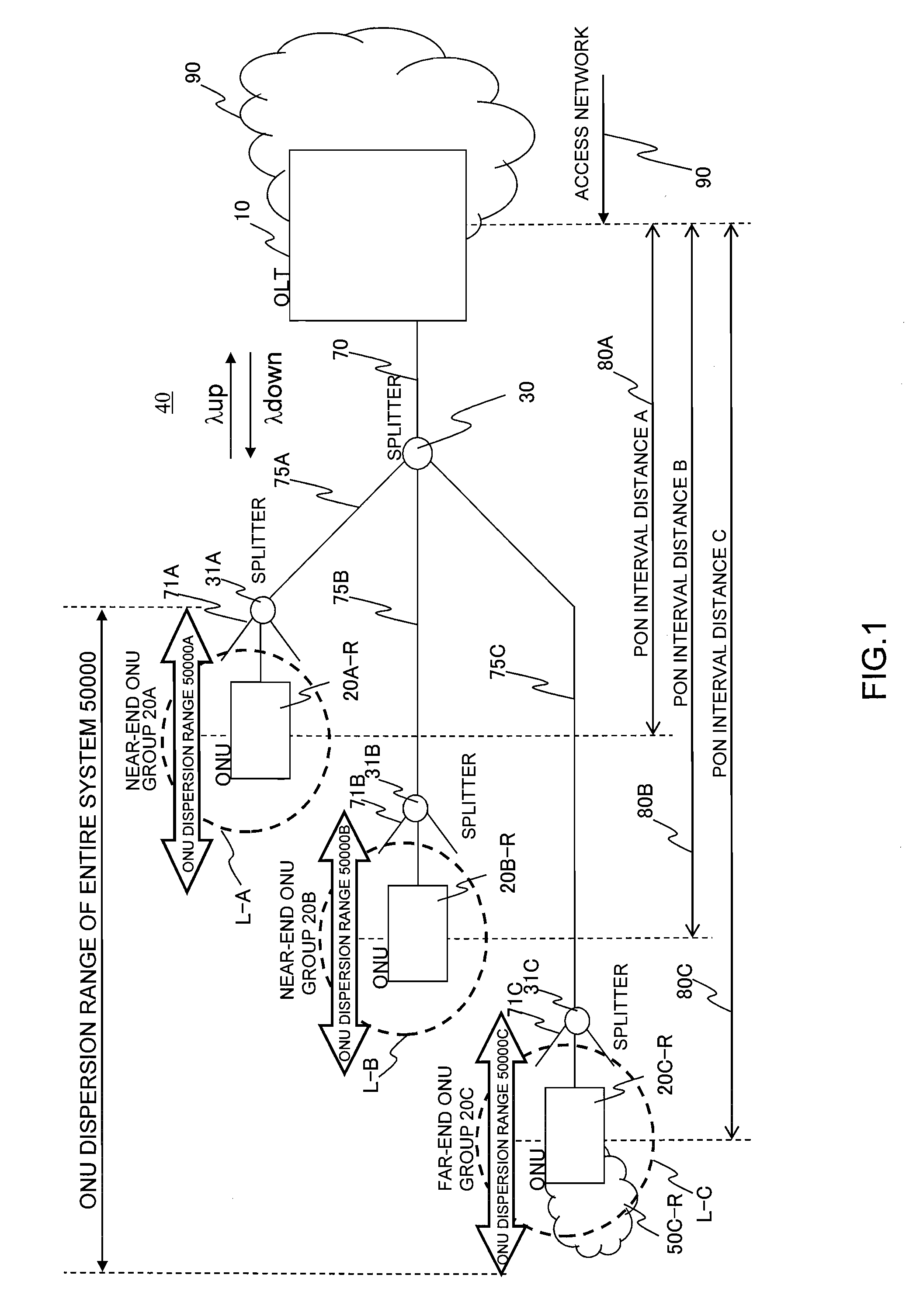Passive optical network system
a technology of optical communication system and optical communication device, which is applied in the direction of multiplex communication, star/tree network, transmission monitoring, etc., can solve the problems of failure of the receiving device of the onus close to the ground, the sensitivity of the light receiving device exceeds the allowable range, and the failure of the light receiving device. to achieve the effect of extending the communication distance between the olt and the onus
- Summary
- Abstract
- Description
- Claims
- Application Information
AI Technical Summary
Benefits of technology
Problems solved by technology
Method used
Image
Examples
Embodiment Construction
[0053]Hereinafter, a description will be given of embodiments of the present invention in detail with reference to the accompanying drawings. Substantially the same parts are denoted by identical reference numerals, and their repetitive description will be omitted. Also, the configuration and operation of a PON according to the embodiments will be described as the configuration and operation of the GPON specified in ITU-T Recommendation G.984.3. However, the PON of the embodiments is not limited to the GPON.
[0054]Referring to FIG. 1, a PON system according to this embodiment will be described. Referring to FIG. 1, a PON system 40 includes an OLT 10, an ONU group 20A, an ONU group 20B, and an ONU group 20C. A concentrated optical fiber 70 connects the OLT 10 to a splitter 30. A first branch optical fiber 75 connects the splitter 30 to a branch splitter 31. A second branch optical fiber 71 connects the branch splitter 31 to an ONU 20.
[0055]The ONU group 20A is an ONU group at a neares...
PUM
 Login to View More
Login to View More Abstract
Description
Claims
Application Information
 Login to View More
Login to View More - R&D
- Intellectual Property
- Life Sciences
- Materials
- Tech Scout
- Unparalleled Data Quality
- Higher Quality Content
- 60% Fewer Hallucinations
Browse by: Latest US Patents, China's latest patents, Technical Efficacy Thesaurus, Application Domain, Technology Topic, Popular Technical Reports.
© 2025 PatSnap. All rights reserved.Legal|Privacy policy|Modern Slavery Act Transparency Statement|Sitemap|About US| Contact US: help@patsnap.com



